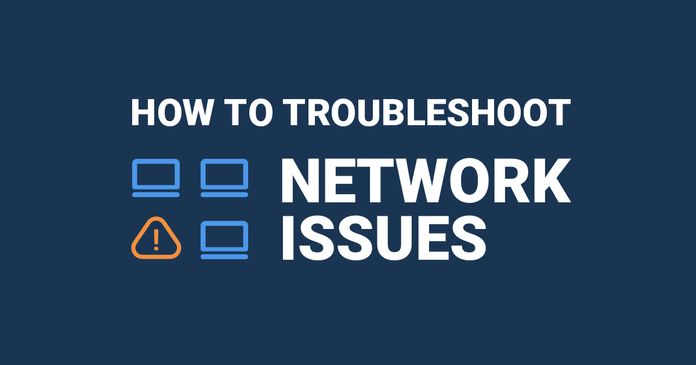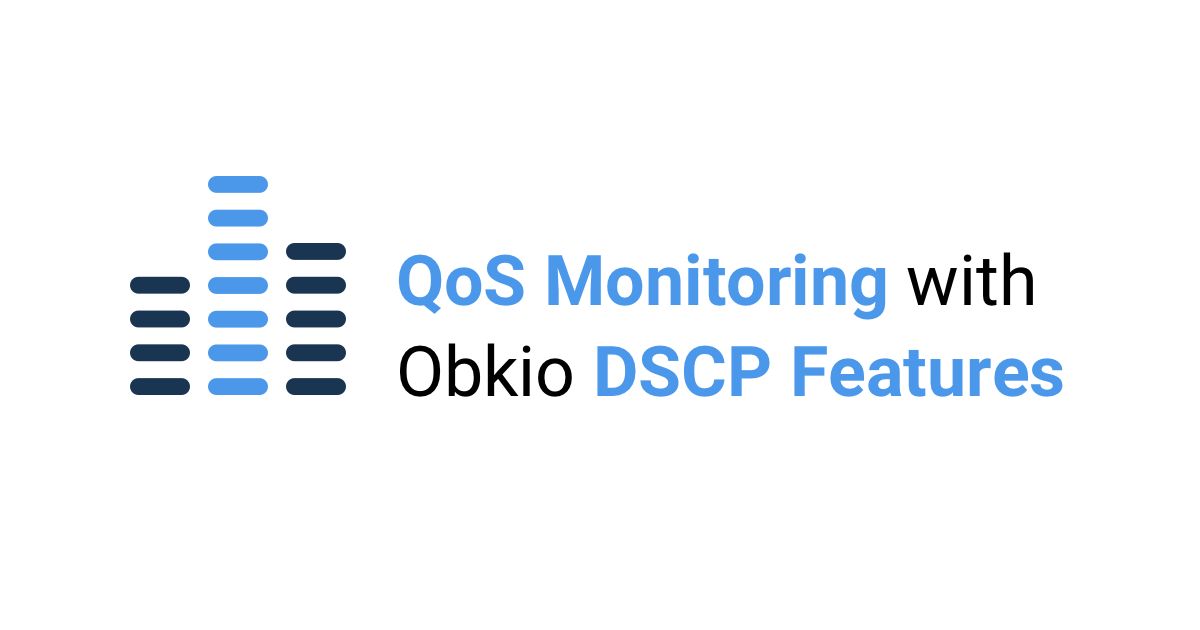Table of Contents
Table of Contents
Network admins are no strangers to the challenges posed by the ever-growing demand for bandwidth, the diversity of applications, and the varying network traffic requirements. Amidst this complexity, one key player stands tall for optimal network performance – Quality of Service, also known as QoS.
In networking, the term QoS holds significant weight, yet its true essence can sometimes elude even the most seasoned administrators. So this blog post aims to unravel the mysteries of Quality of Service, offering a comprehensive guide tailored specifically for network administrators.
From understanding the fundamental principles that underpin QoS to delving into its practical applications and the tools at your disposal, we're set to demystify this critical aspect of network management. Whether you're grappling with bandwidth allocation, prioritizing traffic, or striving for a network that adapts dynamically to varying demands, QoS is the technique that can elevate your network from mere connectivity to a seamlessly orchestrated digital ecosystem.
First, let’s start with the very basics!
Quality of Service (QoS) in networking refers to a set of techniques and mechanisms that prioritize and manage network traffic to ensure a certain level of performance, reliability, and efficiency. The goal of QoS is to optimize the delivery of data by assigning different priorities to various types of traffic, such as voice, video, or critical business applications.
QoS helps maintain a consistent and reliable network experience by preventing congestion, minimizing latency, and ensuring that important data receives preferential treatment over less time-sensitive traffic. This is particularly crucial in environments where different types of applications coexist, and network resources need to be allocated intelligently to meet specific performance requirements.
QoS is commonly used in enterprise networks, telecommunications, and any situation where the quality of data transmission is a critical factor.
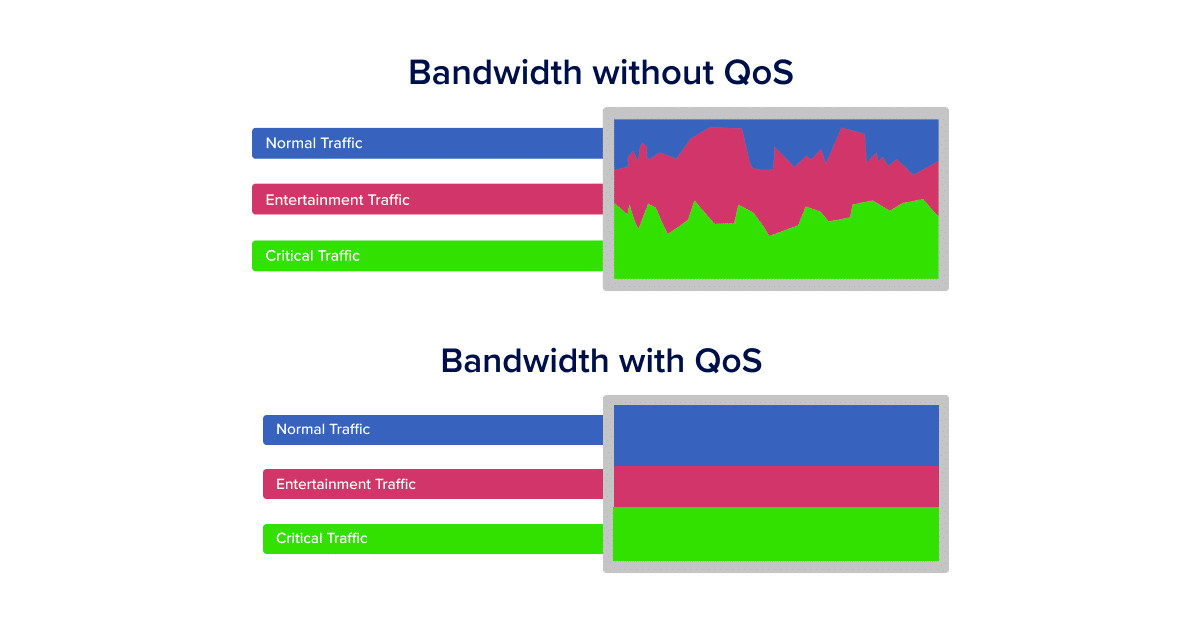

Ever wonder why QoS is the VIP of networking? It's the traffic cop that keeps things running smoothly. Whether you're video conferencing, collaborating on projects, or handling critical tasks, QoS ensures that important stuff gets top priority. It's like having a fast pass for your network, preventing slowdowns and keeping the user experience top-notch in a business setting.
So here’s why it’s important:
1. Enhancing User Experience:
QoS plays a pivotal role in enhancing the overall user experience on a network. By prioritizing and managing network traffic effectively, QoS ensures that critical applications receive the necessary resources, leading to reduced latency and improved performance. This is particularly crucial for applications that demand real-time responsiveness, such as voice and video communication.
2. Optimizing Bandwidth Utilization:
In today's dynamic network environments, bandwidth is a precious resource. QoS enables network administrators to allocate bandwidth strategically based on the priority of different types of traffic. This ensures that mission-critical applications receive the required bandwidth, preventing congestion and bottlenecks.
3. Meeting Service Level Agreements (SLAs):
Many organizations operate under specific service-level agreements defining the expected network performance level. QoS allows network administrators to meet these SLAs by ensuring that the network consistently delivers the required performance, reliability, and responsiveness, even during peak usage periods.
4. Supporting Diverse Applications:
Modern networks host a diverse array of applications, each with its unique requirements. QoS provides a means to differentiate between various types of traffic, whether it's data, voice, video, or other critical applications. This ensures that each application receives the appropriate level of service, contributing to a harmonious and efficient coexistence.
5. Prioritizing Critical Traffic:
QoS enables the prioritization of critical traffic over less time-sensitive data. For example, voice and video traffic can be given higher priority to maintain call clarity and video quality. This ensures that essential services continue to function smoothly, even in the face of network congestion.
6. Minimizing Jitter and Latency:
Jitter and latency can severely impact the performance of real-time applications like VoIP and video conferencing. QoS mechanisms, such as traffic shaping and prioritization, help minimize these issues by ensuring a consistent flow of data and reducing delays in transmitting critical information.
7. Adapting to Changing Network Conditions:
Networks are dynamic, and traffic patterns can change rapidly. QoS provides the flexibility for network administrators to adapt to these changing conditions. By dynamically adjusting resource allocation and prioritization, QoS helps maintain optimal performance under varying loads.
8. Ensuring Business Continuity:
In business environments, network continuity is paramount. QoS safeguards against service disruptions by preventing network degradation during periods of high demand. This is especially crucial for industries where downtime can have severe financial implications.
In essence, Quality of Service in networking is the cornerstone for creating a robust, responsive, and reliable communication infrastructure. Implementing QoS empowers network administrators to proactively manage and optimize network performance, ensuring that the network remains a reliable and efficient conduit for information flow.
In the world of network monitoring, precision and reliability are non-negotiable. Meet Obkio's Network Performance Monitoring tool, your go-to solution for ensuring optimal Quality of Service (QoS) and overall network performance. Obkio is an end-to-end active NPM solution that continuously monitors key elements of your network performance to proactively identify issues and optimize the end-user experience.
Why Choose Obkio?

- Comprehensive Network Performance Monitoring: Obkio provides a holistic view of your network performance. Monitor bandwidth, latency, and jitter to guarantee a seamless digital experience for your users.
- QoS Optimization: Elevate your network's performance with real-time QoS monitoring. Prioritize critical traffic and maintain consistent, reliable data delivery, all at your fingertips.
- User-Friendly Interface: Navigate effortlessly through Obkio's intuitive interface. Network monitoring shouldn't be complicated, and Obkio ensures that even non-experts can access and interpret critical data with ease.
- Customized Alerts: Proactively address potential issues with customized network monitoring alerts. Obkio keeps you in the loop, providing notifications about anomalies before they impact your users.
How to Get Started:
- Sign Up for a Free Trial: Experience the power of Obkio's Network Performance Monitoring with a risk-free 14-day trial of all premium features. No credit card required.
- Easy Deployment: Seamlessly integrate Obkio into your network infrastructure. Obkio’s Onboarding Wizard user-friendly setup ensures you'll be monitoring in minutes, not hours.
- Monitor QoS Like Never Before: Dive into in-depth QoS reports, visualize traffic patterns, and optimize your network's performance with Obkio's robust monitoring capabilities.
Don't let network issues compromise your operations. Take control with Obkio. Elevate your network performance and QoS management today!

Welcome to the foundational cornerstone of our journey – the Fundamentals of Quality of Service (QoS). In this chapter, we'll unravel the essence of QoS, exploring its definition and core principles that form the bedrock of optimized network performance.
At its core, Quality of Service is the orchestrator of network traffic, ensuring that data flows seamlessly with a predetermined level of performance. It's the guardian of reliability, the maestro of prioritization, and the architect of a network that adapts to varying demands.
Quality of Service (QoS) is a set of techniques and mechanisms within networking that ensures the delivery of data with a predetermined level of performance. The core principles of QoS are designed to address the challenges posed by varying types of network traffic, each with its unique requirements. Here's a breakdown:
Traffic Prioritization: QoS involves the categorization of network traffic into different classes or priority levels. This allows administrators to prioritize critical data, such as real-time communication or mission-critical applications, over less time-sensitive traffic.
Resource Allocation: QoS enables the allocation of network resources based on the priority assigned to different types of traffic. This ensures that essential applications receive the necessary bandwidth, minimizing the risk of congestion and optimizing overall network performance.
Latency and Jitter Management: QoS aims to minimize latency (the time it takes for data to travel from source to destination) and jitter (variance in latency). This is especially crucial for real-time applications like VoIP and video conferencing, where delays can significantly impact user experience.
Bandwidth Management: QoS helps in optimizing bandwidth usage by dynamically adapting to changing network conditions. It ensures that high-priority traffic gets the required bandwidth, preventing bottlenecks during peak usage periods.
Learn about the differences between network speed, bandwidth & throughput. Find out why your business should measure them and how!
Learn more

To effectively implement QoS, networks rely on a range of features and mechanisms. Here are some key QoS features that play a crucial role in shaping and optimizing network performance:
- Differentiated Services Code Point (DSCP): DSCP is a field within the IP header that marks packets with a specific code point, indicating the desired level of service. It allows for a finer granularity in defining the priority of packets.
- Traffic Shaping: This feature is used to control the rate of data transmission, preventing bursts of traffic that can lead to congestion. Traffic shaping helps ensure a more consistent and predictable flow of data.
- Queuing Mechanisms: QoS employs various queuing techniques, such as priority queuing, weighted fair queuing, and class-based queuing, to manage the order in which packets are transmitted. This helps in giving precedence to high-priority traffic.
- Traffic Policing: Traffic policing involves monitoring and controlling the rate of incoming and outgoing traffic. Non-compliant traffic may be dropped or marked down, ensuring that network resources are used efficiently.
- Intelligent Routing: QoS-aware routing algorithms help dynamically adjust the network path for different types of traffic based on their priority levels. This ensures that high-priority traffic follows the most efficient route.
Understanding these fundamentals and features of QoS sets the stage for effective network management, allowing administrators to tailor their strategies to meet the specific demands of their applications and users. The successful implementation of QoS not only optimizes performance but also contributes to a more resilient and reliable network infrastructure.
Quality of Service (QoS) in networking works by prioritizing and managing network traffic to ensure a consistent and reliable level of performance for different types of data. QoS mechanisms are designed to address the challenges posed by diverse applications with varying requirements, such as real-time communication, streaming, or traditional data transfers.
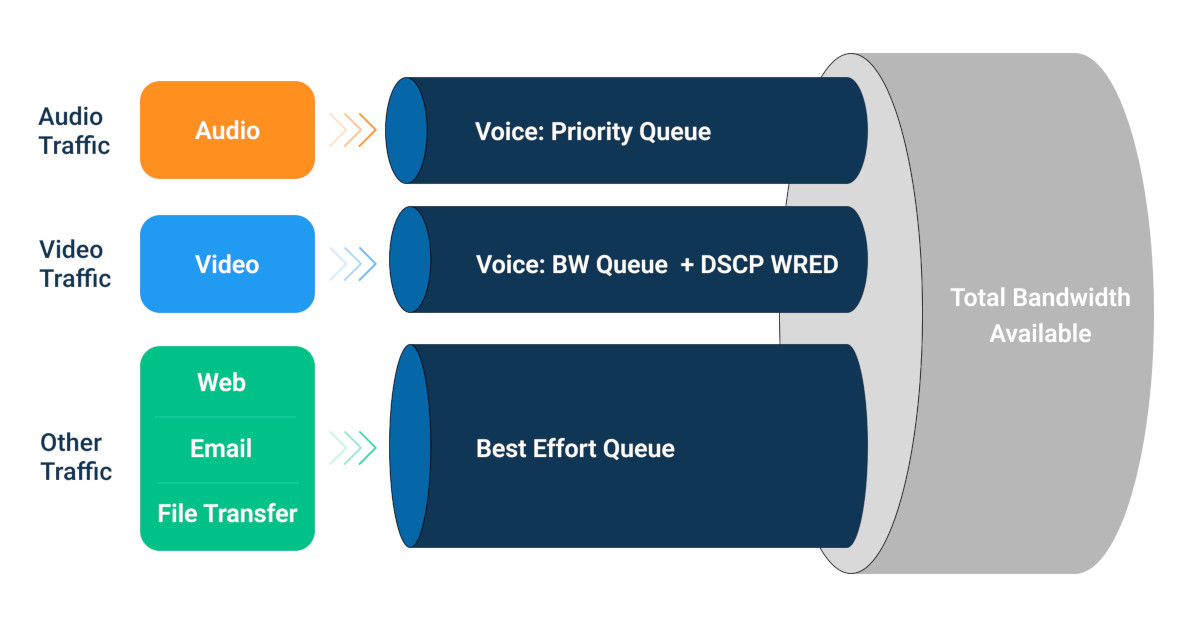
Here's a breakdown of how QoS works:
QoS begins with the classification of network traffic into different categories or classes. This involves identifying the type of data, such as voice, video, or regular data, and assigning priorities based on the criticality of each category.
Once traffic is classified, packets are marked with specific indicators or labels to signify their priority. Commonly used markings include the Differentiated Services Code Point (DSCP) in the IP header, allowing routers and switches to identify and treat packets accordingly.
QoS employs priority queuing mechanisms to determine the order in which packets are transmitted. High-priority traffic, marked as such during classification, is given precedence in the queue over lower-priority traffic. This ensures that critical data is processed and transmitted with minimal delay.
Traffic shaping is a QoS technique used to control the flow of data. It involves regulating the rate at which packets are sent, and smoothing out bursts of traffic to prevent congestion. This helps maintain a consistent data flow and prevents sudden spikes in network activity.
QoS dynamically allocates bandwidth based on the priority of different types of traffic. Critical applications, such as VoIP or video conferencing, receive a higher share of available bandwidth to ensure optimal performance, while less time-sensitive data may operate within allocated lower bandwidth thresholds.
Traffic policing monitors the rate of incoming and outgoing traffic and enforces predefined policies. Non-compliant traffic may be dropped, marked down in priority, or subjected to specific actions to ensure that network resources are used efficiently and in accordance with QoS policies.
QoS-aware routing algorithms dynamically adjust the network path for different types of traffic. This ensures that high-priority traffic follows the most efficient route, minimizing latency and optimizing the overall performance of the network.
Modern QoS implementations are often adaptive, meaning they can dynamically adjust to changing network conditions. This adaptability ensures that QoS policies remain effective even in the face of varying workloads and traffic patterns.
Integrate a Network Performance Monitoring (NPM) tool like Obkio to continuously monitor QoS metrics. These tools provide real-time visibility into network performance, QoS policies, and the impact on different applications. Monitoring QoS with precision allows administrators to proactively identify and resolve potential issues, ensuring a consistently high level of service.
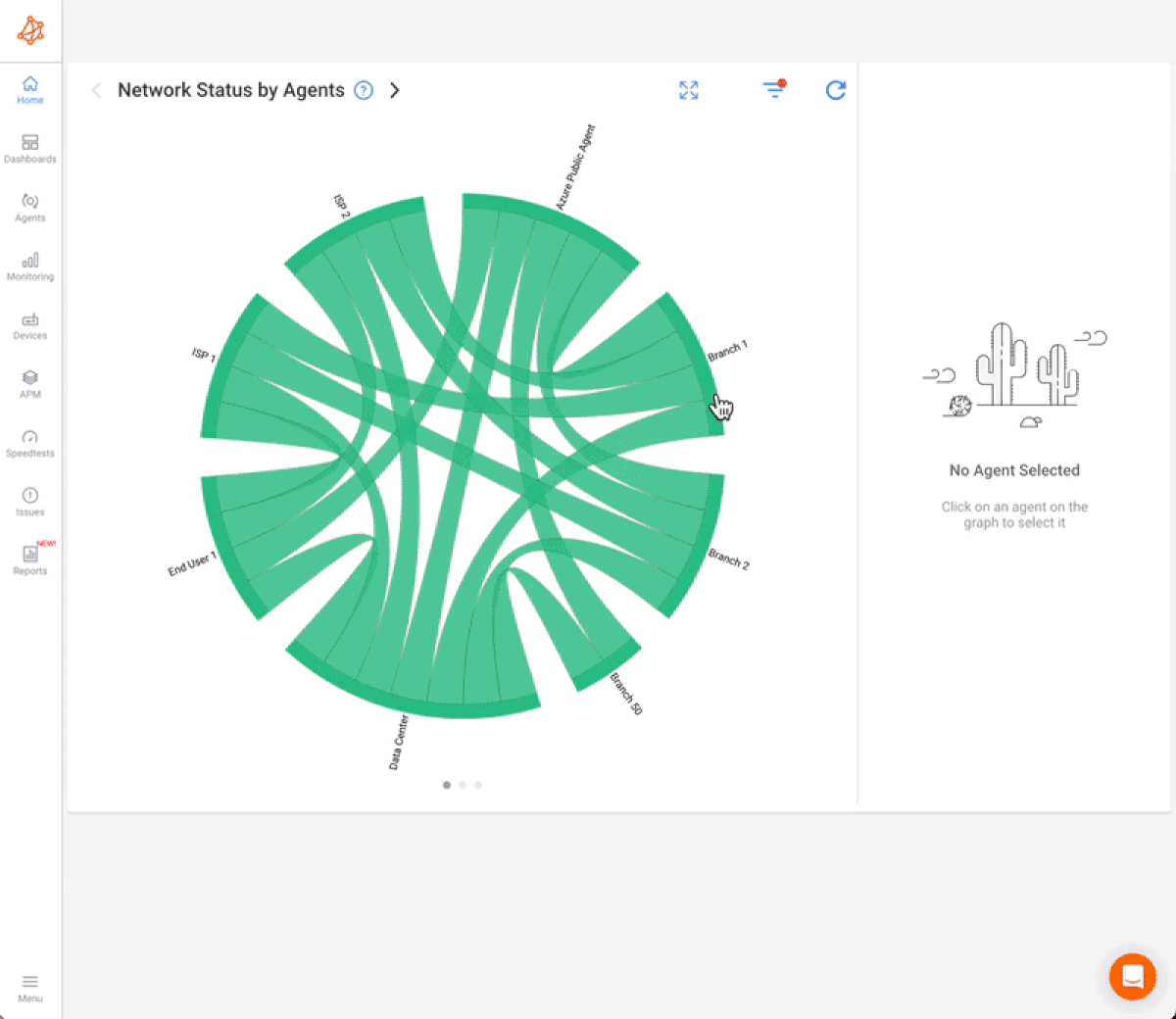
- 14-day free trial of all premium features
- Deploy in just 10 minutes
- Monitor performance in all key network locations
- Measure real-time network metrics
- Identify and troubleshoot live network problems

QoS in networking works by implementing a set of mechanisms and techniques to classify, prioritize, and manage network traffic. By doing so, it ensures that critical applications receive the necessary resources and attention, leading to a more responsive, reliable, and efficient network.
In this section, we're breaking down the ABCs of QoS policies. We'll get cozy with DSCP and IntServ, and figure out what makes Best Effort different from QoS-enabled traffic. No jargon, just straightforward insights into how these policies work to keep your network humming smoothly.
DSCP is a field within the IP header of a packet that is used to classify and mark the priority of the packet. It is a crucial element of the IP Quality of Service (QoS) suite and allows for a finer granularity in defining the treatment of packets across the network.
Key Characteristics:
- Six Bits of Differentiation: DSCP utilizes the first six bits of the IP header's Differentiated Services (DS) field to define the code point. This results in 64 possible DSCP values, allowing for a nuanced classification of traffic.
- Per-Hop Behavior (PHB): Each DSCP value corresponds to a specific Per-Hop Behavior (PHB), indicating the treatment the packet should receive at each hop along its route through the network. This enables a standardized approach to QoS across diverse network environments.
- Scalability: The scalability of DSCP makes it suitable for networks with varying levels of complexity, allowing administrators to tailor QoS policies to meet the specific needs of different applications and services.
Integrated Services (IntServ) is a QoS architecture that provides a more granular and individualized approach to guaranteeing quality for specific network applications. It is based on the concept of signalling and reservation, where applications explicitly request and receive guaranteed QoS from the network.
Key Characteristics:
- Resource Reservation Protocol (RSVP): IntServ employs RSVP to establish and maintain a reservation for the required resources along the network path. This ensures that the necessary bandwidth and service quality are reserved end-to-end for the specified application.
- Fine-Grained Control: Unlike DSCP, which operates on a per-hop basis, IntServ offers more fine-grained control over resources. This makes it suitable for applications that demand strict guarantees on latency, jitter, and bandwidth.
- Individual Flows: IntServ allows applications to request specific QoS parameters for individual data flows. This makes it well-suited for real-time and multimedia applications where consistent and predictable performance is critical.
Best Effort:
Best Effort is the default mode of data transmission in traditional IP networks. In this mode, all packets are treated equally, and the network makes no guarantees regarding delivery times or quality.
Best Effort is suitable for non-critical data and applications where occasional delays or packet loss are acceptable. Email and web browsing are common examples of applications that can operate under Best-effort conditions.
QoS-enabled Traffic:
QoS-enabled traffic refers to data that benefits from QoS mechanisms, such as prioritization, bandwidth allocation, and traffic shaping. QoS-enabled traffic receives special treatment based on predefined policies to ensure a certain level of performance.
QoS-enabled traffic is essential for real-time applications like VoIP, video conferencing, and critical business applications. By prioritizing and managing this traffic, QoS ensures a consistent and reliable user experience, even in the face of network congestion.
Understanding the nuances of DSCP, IntServ, and the distinction between Best Effort and QoS-enabled traffic is crucial for network administrators aiming to implement effective QoS policies that align with the specific needs of their applications and users. These policies contribute to the creation of a responsive, high-performing network infrastructure.
In this section, we're getting down to business with the step-by-step process of implementing Quality of Service (QoS). From deciding what gets priority to configuring your network devices and keeping a close eye on performance, these are the hands-on steps to ensure your network runs like a well-oiled machine. We're not just talking theory—this is your practical guide to turning QoS into action. Let's make it happen!

Define Traffic Classes: Identify different types of network traffic, such as voice, video, data, or specific applications. Classify them based on their criticality and performance requirements.
Prioritize Traffic: Determine the priority levels for each class of traffic. Critical applications like VoIP may be assigned higher priority than less time-sensitive data.
Set Bandwidth Allocation: Determine how much bandwidth each class of traffic should be allocated. Assign higher bandwidth to critical applications to ensure they receive the necessary resources.
Specify Queue Management: Choose queuing mechanisms that align with your priorities. Priority queuing, weighted fair queuing, or class-based queuing are common options.
Establish Traffic Shaping Parameters: If applicable, define traffic shaping parameters to control the rate at which traffic is transmitted. This helps prevent packet bursts that can lead to congestion.
Router and Switch Configuration: Access the configuration interface of routers and switches. Implement QoS settings based on the defined policies. This includes setting up class maps, policy maps, and service policies.
Apply DSCP Markings: Use Differentiated Services Code Point (DSCP) or other packet markings to indicate the priority level of each packet. Configure devices to recognize and act upon these markings.
Implement Queuing Mechanisms: Configure queuing mechanisms on routers and switches. Adjust parameters such as buffer sizes and weights to align with the prioritization strategy.
Traffic Policing: Set up traffic policing to monitor and control the rate of incoming and outgoing traffic. Define policies for handling non-compliant traffic, whether it's dropped or marked down.
Traffic Shaping: If shaping is part of your strategy, configure traffic shaping parameters to smooth out traffic flow. This helps prevent sudden bursts of data that can lead to congestion.
Implement Monitoring Tools: Deploy QoS monitoring tools, like Obkio, to continuously monitor and measure network performance. These tools provide real-time visibility into QoS metrics such as latency, jitter, and packet loss.
Monitor Policy Effectiveness: Regularly check if QoS policies are effectively prioritizing traffic as intended. Identify and address any anomalies or deviations from the defined QoS objectives.
Use Adaptive QoS Features: If available, leverage adaptive QoS features provided by modern routers and switches. These features automatically adjust QoS parameters based on changing network conditions.
Implement Dynamic Bandwidth Allocation: Consider dynamic bandwidth allocation mechanisms that can adapt to varying workloads and traffic patterns.
Test QoS Policies: Conduct testing to ensure that QoS policies are correctly implemented. Use network simulation tools or conduct real-world tests to validate the effectiveness of the QoS configuration.
Monitor Performance: Implement network performance monitoring tools like Obkio to continuously monitor QoS metrics. This helps identify any issues and ensures that the network is meeting the defined QoS objectives.
Document QoS Configuration: Maintain detailed documentation of the QoS configuration, including policies, settings, and any changes made. This documentation serves as a reference for troubleshooting and future adjustments.
Training: Ensure that network administrators and relevant staff are trained on the QoS implementation. Familiarize them with the configuration, monitoring tools, and troubleshooting procedures.
Periodic Review: Regularly review QoS policies and network performance. Identify any changes in network requirements or conditions that may necessitate adjustments to the QoS configuration.
Adjust Configuration: Based on the review, make necessary adjustments to the QoS configuration. This might involve tweaking bandwidth allocations, updating prioritization strategies, or adapting to changes in network traffic patterns.
By incorporating QoS monitoring into the implementation process, network administrators can proactively ensure that QoS policies are effective, monitor ongoing performance, and make informed adjustments to optimize network quality.
Welcome to the heart of QoS metrics! Now, let’s take a look at the essential network metrics that make or break your network performance. From latency and jitter to bandwidth and packet loss, we'll demystify the metrics that matter. Buckle up as we explore the numbers and nuances that keep your network running like a well-oiled machine.
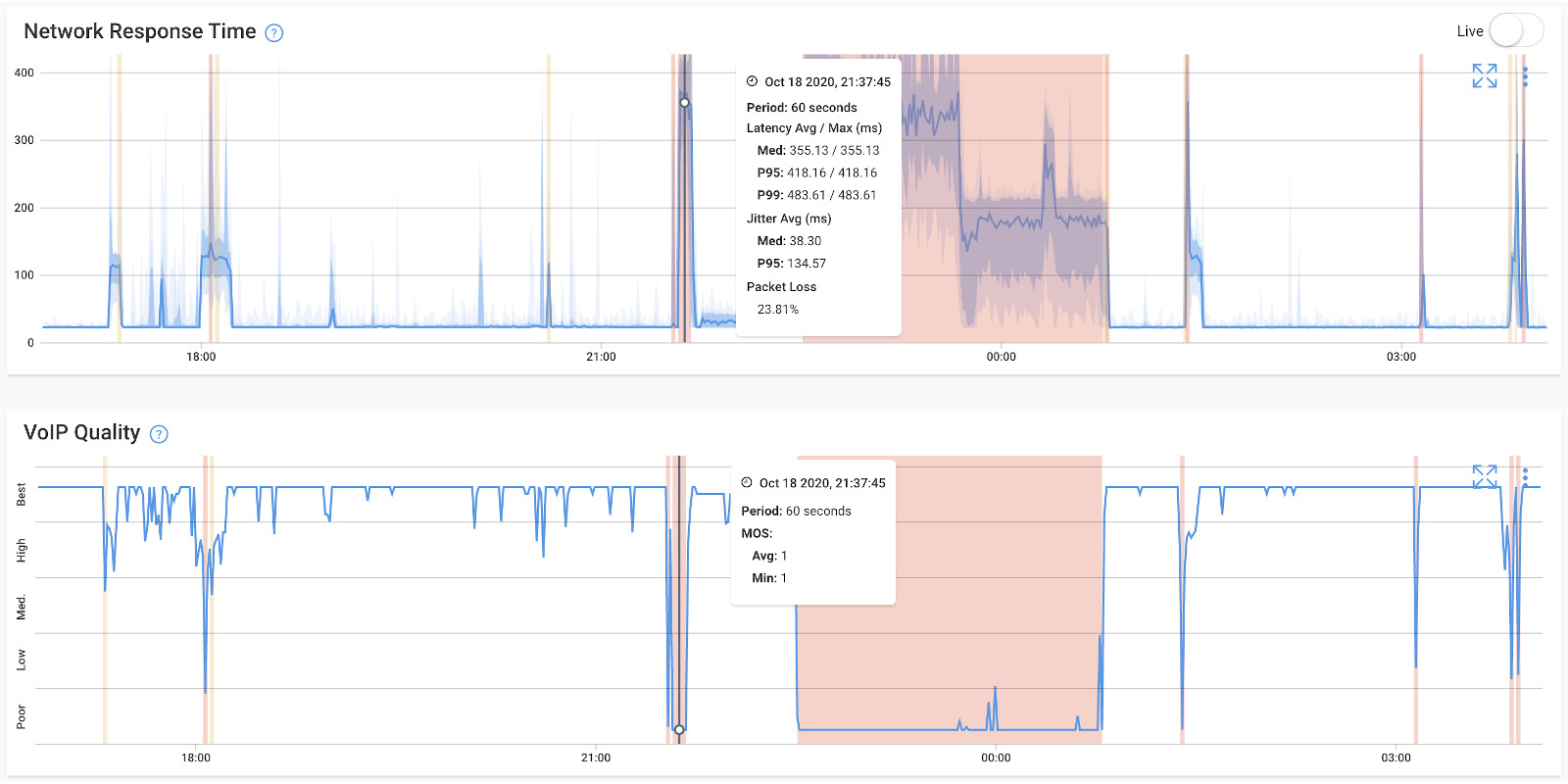

1. Latency:
Latency is the time it takes for a packet to travel from the source to the destination. It is a critical metric, especially for real-time applications, where delays can impact user experience. Measured in milliseconds (ms), latency should be minimized to ensure responsive communication and timely data delivery.
2. Jitter:
Jitter refers to the variation in latency over a period of time. Inconsistent jitter can lead to disruptions in real-time applications, causing voice or video quality issues. Measured in milliseconds (ms), lower jitter values indicate more stable and predictable latency.
3. Packet Loss:
Packet loss occurs when data packets fail to reach their destination. Excessive packet loss can degrade the quality of communication and result in retransmissions. Usually represented as a percentage, lower packet loss rates are preferred for optimal network performance.
4. Bandwidth:
Bandwidth is the maximum data transfer rate of a network connection. It influences how much data can be transmitted within a given time frame. Measured in bits per second (bps) or its multiples (Mbps, Gbps), sufficient bandwidth is essential for handling the demands of various applications.
5. Throughput:
Throughput is the actual amount of data transferred successfully over the network. It considers factors like protocol efficiency and network congestion. Measured in bits per second (bps) or its multiples (Mbps, Gbps), higher throughput values indicate efficient data transfer.
6. Priority Levels:
QoS involves assigning priority levels to different types of traffic based on their importance. This ensures that critical applications receive preferential treatment. Often defined using Differentiated Services Code Point (DSCP) markings, priority levels guide routers and switches in handling packets.
7. Queuing Delay:
Queuing delay occurs when packets wait in a queue before being transmitted. This delay can impact the overall responsiveness of the network. Measured in milliseconds (ms), minimizing queuing delay helps maintain low-latency communication.
8. Packet Markings:
Packet markings, such as DSCP values, are used to indicate the priority or class of a packet. These markings guide network devices in applying QoS policies. Expressed through specific values within the IP header, packet markings influence how routers and switches treat each packet.
9. Service Level Agreements (SLAs):
SLAs are contractual agreements that define the expected level of service in terms of metrics like latency, jitter, and packet loss. Adhering to and monitoring SLAs ensures that the network meets the performance expectations set by service providers or organizations.
Understanding and effectively managing these key metrics and parameters associated with QoS is essential for network administrators. Monitoring and optimizing these factors contribute to a well-tuned network that delivers a reliable and consistent user experience, especially for applications with stringent performance requirements.
Let’s dive into the power of Quality of Service (QoS) and its game-changing benefits for various network applications. Quality of Service (QoS) is particularly beneficial for applications and services that have specific requirements regarding performance, reliability, and responsiveness.
From the smooth melodies of streaming services to the strategic moves in online gaming, we're about to explore how QoS transforms the user experience across the digital landscape. Let's dive into the world where QoS reigns supreme!
VoIP applications rely on real-time communication. QoS for VoIP ensures low latency, minimal jitter, and consistent bandwidth to maintain crystal-clear voice quality and a seamless calling experience.
- QoS Priority: VoIP is highly sensitive to latency and jitter. QoS prioritizes VoIP traffic to minimize delays and ensure a smooth, real-time communication experience.
- Packet Prioritization: VoIP packets are assigned high priority, often marked with specific Differentiated Services Code Point (DSCP) values, ensuring they are processed ahead of lower-priority traffic.
Optimize VoIP performance with QoS implementation. Explore best practices for QoS for VoIP, overcome challenges, and elevate clarity with Obkio's NPM tool.
Learn more

Similar to VoIP, video conferencing demands real-time communication with low latency/ good latency and minimal jitter. QoS ensures that video and audio streams are prioritized to prevent lag or disruptions during virtual meetings.
- QoS Priority: Similar to VoIP, video conferencing relies on real-time communication. QoS prioritizes video and audio streams to minimize latency, jitter, and packet loss.
- Bandwidth Allocation: Video conferencing traffic may be allocated a higher share of bandwidth to maintain high-quality video and audio transmissions.
Unified communications platforms, which integrate various communication channels, benefit from QoS to prioritize voice, video, and data traffic, ensuring a seamless and integrated user experience.
- QoS Priority: Unified communications platforms, integrating voice, video, and messaging, benefit from QoS to ensure a seamless user experience. QoS prioritizes different types of communication traffic.
- Packet Classification: Packets from various communication channels are classified and prioritized based on their importance and real-time requirements.
Business-critical applications like customer relationship management (CRM), enterprise resource planning (ERP), and collaboration tools benefit from QoS to ensure that essential data is transmitted with priority, minimizing delays.
- QoS Priority: Business-critical applications like Customer Relationship Management (CRM) and Enterprise Resource Planning (ERP) benefit from QoS prioritization. This ensures timely data transfer and responsiveness.
- Bandwidth Allocation: QoS allocates sufficient bandwidth to support the data transfer needs of enterprise applications.
VPNs are crucial for secure remote access. QoS helps prioritize VPN traffic to ensure a consistent and reliable connection, especially when employees are accessing corporate networks remotely.
- QoS Priority: QoS ensures that VPN traffic receives reliable and consistent performance. Critical data transmitted over VPNs is often prioritized to maintain secure and efficient communication.
- Bandwidth Allocation: QoS allocates sufficient bandwidth to support the secure transfer of data over VPN connections.
Applications and services hosted in the cloud, such as cloud-based storage or SaaS applications, benefit from QoS to ensure reliable and efficient data transfer between the user and the cloud servers.
- QoS Priority: Applications and services hosted in the cloud benefit from QoS to ensure consistent and reliable data transfer between users and cloud servers.
- Dynamic Bandwidth Allocation: QoS mechanisms may dynamically adjust bandwidth allocation based on the demand for cloud-based services, optimizing performance.
Telemedicine and other healthcare applications often involve real-time data transmission. QoS ensures that medical data, especially in scenarios like remote patient monitoring, is transmitted with priority for timely analysis.
- QoS Priority: Telemedicine and other healthcare applications often involve real-time data transmission. QoS ensures that medical data is transmitted with high priority for timely analysis and response.
- Latency Management: QoS minimizes latency for healthcare applications, supporting the real-time nature of patient monitoring and communication.
In financial sectors, where split-second decisions matter, QoS ensures low-latency and high-priority transmission of financial data for trading platforms and other financial applications.
- QoS Priority: In financial sectors, where split-second decisions matter, QoS prioritizes financial data transmitted over trading platforms. Low-latency connections are crucial for timely transactions.
- Packet Prioritization: Financial data packets are marked with high-priority values to ensure quick processing.
Video and audio streaming services, such as Netflix or Spotify, require a consistent and reliable connection to deliver high-quality content. QoS helps maintain smooth playback by prioritizing streaming traffic.
- QoS Priority: QoS ensures that streaming services receive sufficient bandwidth and prioritization for uninterrupted playback. Video and audio data are often prioritized to prevent buffering or lag.
- Dynamic Bandwidth Allocation: QoS mechanisms dynamically adjust bandwidth allocation based on the streaming service's demand, optimizing performance during peak usage.
Online gaming relies on low-latency connections to ensure a responsive gaming experience. QoS helps prioritize gaming traffic, reducing lag and providing a competitive edge to gamers.
- QoS Priority: Online gaming requires low-latency connections to ensure a responsive gaming experience. QoS prioritizes gaming traffic, minimizing delays and providing a smoother gaming environment.
- Packet Prioritization: Gaming packets are often marked with high-priority DSCP values to ensure they are processed quickly.
In summary, any application or service that relies on real-time communication, low-latency data transfer, or consistent network performance stands to gain significant benefits from the implementation of Quality of Service. QoS ensures that critical traffic receives priority treatment, maintaining a high standard of service for users and applications.

When it comes to the heartbeat of your network, smooth sailing is the goal. But, let's face it—hiccups happen. In this chapter, we're delving into the art of troubleshooting common Quality of Service (QoS) issues. From tackling latency gremlins to smoothing out jitter, we're handing you the toolkit to keep your network performance top-notch.
Latency refers to the delay between sending and receiving data. In real-time applications like VoIP or video conferencing, excessive latency can lead to communication delays and a poor user experience.
Possible Causes:
- Inadequate bandwidth allocation for real-time applications.
- Network congestion leads to delays in data transmission.
- Configuration issues in QoS settings affect the prioritization of traffic.
Troubleshooting Steps:
- Check Bandwidth Allocation: Ensure that critical applications have sufficient allocated bandwidth to prevent congestion.
- Review Traffic Prioritization: Confirm that the priority settings for real-time traffic are configured correctly.
- Examine Network Path: Identify potential bottlenecks or latency points in the network path.
Jitter is the variability in the delay of received packets. Inconsistent network or Internet jitter can result in disruptions in audio or video quality in real-time applications.
Possible Causes:
- Fluctuations in network traffic.
- Ineffective traffic shaping or buffering mechanisms.
- Insufficient prioritization of real-time traffic.
Troubleshooting Steps:
- Adjust Traffic Shaping: Fine-tune traffic shaping parameters to regulate the flow and minimize jitter.
- Evaluate Network Congestion: Check for periods of high traffic that might cause network congestion and contribute to jitter.
- Optimize Packet Prioritization: Review and refine how packets are prioritized to minimize jitter for critical applications.
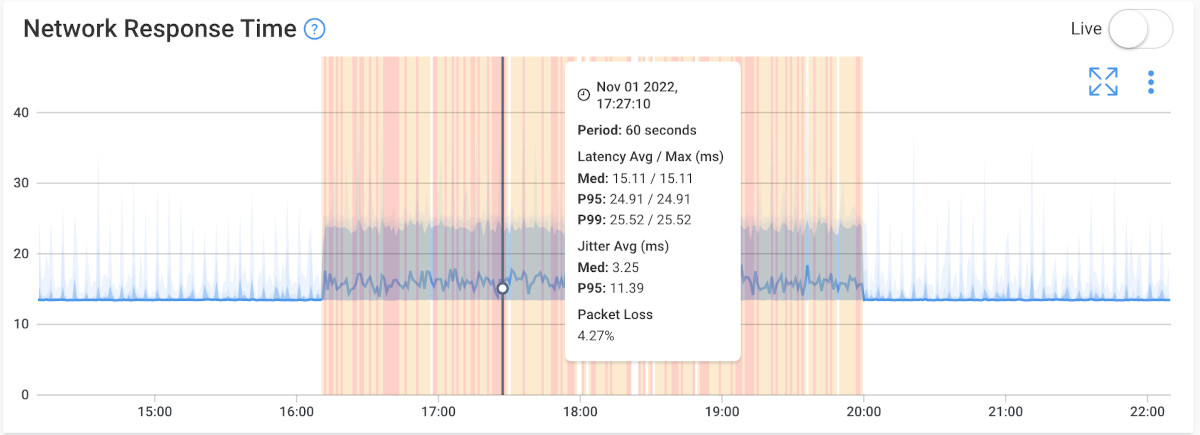
Packet loss occurs when data packets fail to reach their destination. In real-time applications, packet loss can lead to gaps or distortions in audio or video streams.
Possible Causes:
- Network congestion causing dropped packets.
- Inadequate buffer sizes on network devices.
- Misconfiguration in traffic policing settings.
Troubleshooting Steps:
- Inspect Traffic Policing: Adjust traffic policing parameters to prevent excessive packet drops.
- Review Buffer Management: Ensure that network devices have adequate buffer space to handle bursts of traffic.
- Check for Network Congestion: Identify and address periods of network congestion contributing to packet loss. Including WAN or LAN congestion.
If QoS fails to prioritize critical traffic effectively, non-time-sensitive applications may consume more resources, impacting the performance of real-time applications.
Possible Causes:
- Incorrect DSCP markings or packet prioritization settings.
- Issues in queuing mechanisms affecting the order of packet transmission.
- Insufficient bandwidth allocation for high-priority traffic.
Troubleshooting Steps:
- Verify DSCP Markings: Confirm that Differentiated Services Code Point (DSCP) markings are applied correctly.
- Check Router and Switch Configuration: Review QoS settings on routers and switches to ensure they align with prioritization policies.
- Inspect Queuing Mechanisms: Confirm that queuing mechanisms are functioning as intended.
Uneven distribution of bandwidth can lead to congestion and reduced performance for critical applications.
Possible Causes:
- Inadequate allocation for high-priority traffic classes.
- Lack of dynamic mechanisms to adapt to varying network conditions.
- Failure to account for changing application demands.
Troubleshooting Steps:
- Reassess Bandwidth Allocation: Adjust the allocation for different traffic classes based on changing network demands.
- Evaluate Dynamic Bandwidth Allocation: If implemented, ensure that dynamic mechanisms adapt effectively to varying workloads.
How to measure bandwidth, identify issues & optimize network performance. Use Obkio's Network Performance Monitoring tool for easy bandwidth monitoring.
Learn more

In a dynamic network environment, QoS mechanisms may struggle to adapt to changing conditions, impacting performance.
Possible Causes:
- Ineffective adaptive QoS features in network devices.
- Misconfiguration in dynamic bandwidth allocation settings.
- Lack of real-time monitoring tools to assess changing network conditions.
Troubleshooting Steps:
- Review Adaptive QoS Features: Confirm that adaptive QoS mechanisms are configured and functioning properly.
- Check Monitoring Tools: Ensure that QoS monitoring tools provide real-time insights into changing network conditions.
- Adjust Dynamic Parameters: If necessary, fine-tune parameters for dynamic bandwidth allocation or shaping.
Misconfigurations in QoS settings can lead to unexpected behaviour and suboptimal performance.
Possible Causes:
- Errors in configuring class maps, policy maps, or service policies.
- Mismatched DSCP markings between routers and switches.
- Lack of adherence to best practices in QoS configuration.
Troubleshooting Steps:
- Review Configuration Documentation: Refer to detailed documentation to identify potential misconfigurations.
- Use Network Simulation: Simulate network conditions to test and validate QoS policies.
Training and Skill Development: Ensure that network administrators are adequately trained to manage and troubleshoot QoS configurations.
Learn how to troubleshoot network issues by identifying where, what, why network problems occur with Network Troubleshooting tools.
Learn more

So you may be wondering how all this traffic management magic actually impacts your network performance and user experience. QoS isn't just a feature; it's the backbone ensuring that critical applications get the attention they deserve, latency is minimized, and overall network efficiency is optimized. Let's get straight to the core of why QoS matters in the world of networks and how QoS functions as a key player in enhancing network performance.
1. Optimizing User Experience:
Latency Taming: QoS takes center stage in minimizing latency, the arch-nemesis of real-time applications. By prioritizing critical traffic, such as VoIP or video conferencing, QoS ensures that delays are kept to a minimum, resulting in smooth, responsive interactions.
Jitter Juggling: In the realm of real-time communication, jitter can disrupt the harmony. QoS steps in to regulate the flow of data, ironing out inconsistencies and delivering a jitter-free experience in applications like video conferencing and VoIP.
2. Prioritizing Critical Applications:
QoS orchestrates the allocation of bandwidth, ensuring that crucial applications receive the lion's share. Whether it's the steady stream of a video conference or the real-time data transfer in a financial transaction, QoS guarantees that essential traffic gets the priority treatment it deserves.
3. Ensuring Packet Integrity:
QoS acts as a guardian against the spectre of packet loss, a menace that can haunt real-time applications and degrade overall network performance. By implementing robust policies, QoS safeguards the integrity of data packets, preventing disruptions in critical transmissions.
4. Efficient Resource Utilization:
Network congestion can be a formidable foe, leading to bottlenecks and inefficiencies. QoS introduces intelligent queuing mechanisms, directing traffic with finesse. Whether it's priority queuing, weighted fair queuing, or other strategies, QoS ensures that resources are allocated judiciously for optimal efficiency.
5. Elevating Business-Critical Applications:
In the corporate arena, where the heartbeat of operations relies on applications like CRM and ERP, QoS takes charge. It ensures that these business-critical applications traverse the network with the utmost priority, fostering seamless operations and supporting productivity.
6. Meeting Service Level Agreements (SLAs):
QoS isn't merely a silent guardian; it's a contractual virtuoso. Organizations often define Service Level Agreements (SLAs) that outline the expected network performance. QoS becomes the enforcer, ensuring that the network meets or exceeds these predefined benchmarks.

Recognizing the signs that your network could benefit from Quality of Service (QoS) implementation is crucial for maintaining optimal performance, especially in environments where multiple applications and services share network resources. Here are some signs that indicate your network may need QoS:
Performance Degradation During Peak Hours: Sluggish performance, increased latency, and dropped connections during periods of high network traffic. The network struggles to handle increased demand, impacting the user experience for critical applications.
Real-Time Applications Experience Disruptions: VoIP calls have poor audio quality, video conferencing suffers from lag, or streaming services frequently buffer. Real-time applications are not receiving the priority they require, leading to disruptions and degraded quality.
Competing Applications Impact User Experience: Business-critical applications, such as CRM or ERP systems, slow down or become less responsive when other non-critical applications are active. Lack of differentiation in traffic priority, resulting in competition for resources among diverse applications.
Inconsistent Performance for Cloud-Based Services: Slow access to or unreliable performance of applications hosted in the cloud.
Indication: Inconsistent performance of cloud-based services due to varying demands on network resources.
Frequent Network Congestion: Regular instances of network congestion, especially during specific periods or events. The network is struggling to efficiently manage and distribute available bandwidth, leading to congestion and performance issues.
Critical Applications Miss Service Level Agreement (SLA) Targets: Business-critical applications consistently fall short of performance benchmarks outlined in SLAs. Without prioritization, critical applications may not meet the expected service levels, impacting overall business operations.
Increased Complaints About Network Performance: A rise in user complaints about slow or unreliable network performance. Users notice and express dissatisfaction with the overall performance of the network, indicating potential issues that need addressing.
If you observe these signs, it's a strong indication that implementing Quality of Service is warranted. QoS helps address these issues by prioritizing critical traffic, ensuring efficient bandwidth allocation, and optimizing the network for a diverse set of applications.
As we near the conclusion of this journey through the world of QoS, we're not just wrapping up; we're leaving you with a parting gift — a collection of final tips to supercharge your network performance. These last nuggets of wisdom are the finishing touches, ensuring that your QoS implementation stands strong and your network performs at its peak.
Tip #1. Understand Application Requirements:
Start by understanding the specific requirements of different applications in your network. Knowing the characteristics and priorities of applications helps tailor QoS policies to meet their specific needs.
Tip #2. Define Clear QoS Policies:
Clearly define and document QoS policies based on the requirements of your network and applications. Well-defined policies provide a roadmap for implementing QoS and ensure consistency across the network.
Tip #3. Prioritize Critical Traffic Classes:
Prioritize critical traffic classes such as VoIP, video conferencing, and business-critical applications. By assigning higher priority to crucial traffic, you ensure that these applications receive preferential treatment and optimal resources.
Step #4. Implement Effective Bandwidth Allocation:
Allocate bandwidth based on the importance and requirements of different traffic classes. Proper bandwidth allocation prevents congestion and ensures that each application gets the necessary resources for optimal performance.
Tip #5. Optimize Queuing Mechanisms:
Choose queuing mechanisms that align with your network's priorities, such as priority queuing or weighted fair queuing. Effective queuing ensures that high-priority traffic is processed ahead of lower-priority traffic, minimizing delays.
Tip #6. Utilize Differentiated Services Code Point (DSCP) Markings:
Implement DSCP markings to classify and mark packets according to their priority. DSCP markings enable routers and switches to identify and prioritize packets, ensuring consistent handling across the network.
Tip #7. Implement Traffic Policing and Shaping:
Set up traffic policing to control the rate of incoming and outgoing traffic. Use traffic shaping to smooth out traffic flow. Policing prevents excessive traffic that could lead to congestion, while shaping ensures a more consistent and controlled data flow.
Tip #8. Deploy Adaptive QoS Features:
If available, leverage adaptive QoS features that dynamically adjust to changing network conditions. Adaptive features enable your network to respond to fluctuations in traffic patterns and optimize QoS parameters accordingly.
Tip #9. Regularly Review and Adjust QoS Configurations:
Conduct periodic reviews of QoS configurations and make adjustments based on changes in network requirements. Regular reviews ensure that QoS policies remain aligned with the evolving needs of your network.
Tip #10. Implement Network Performance Monitoring:
Use network performance monitoring tools to continuously assess QoS metrics such as latency, jitter, and packet loss. Monitoring provides real-time insights into the effectiveness of QoS policies, allowing you to identify and address issues promptly.

Tip #11. Provide Training for Network Administrators:
Ensure that network administrators are well-trained in QoS concepts, configurations, and troubleshooting. Knowledgeable administrators can implement, manage, and troubleshoot QoS effectively, contributing to the overall success of the optimization process.
Tip #12. Stay Informed About Network Changes:
Stay informed about changes in network topology, application usage patterns, and user requirements. Being aware of changes allows you to proactively adjust QoS configurations to maintain optimal performance.
By following these tips, you can create a robust and effective QoS implementation that enhances the overall performance of your network, prioritizes critical applications, and ensures a positive user experience.
In the world of networking, Quality of Service (QoS) is the unsung hero, shaping the very fabric of user experience and application performance. As we reach the end of our exploration of QoS, we can see that QoS is not just a technical mechanism—it's a necessary technique that dictates how applications communicate, ensuring a harmonious symphony within your network.
From prioritizing critical traffic to dynamically adapting to shifting network conditions, QoS elevates the user experience and supports the diverse demands of applications. The bandwidth allocation, packet prioritization, and traffic queuing —all under the baton of QoS—craft an optimized environment where network resources are allocated judiciously, and each application gets its moment in the spotlight.

Before we reach the end, a vital component demands our attention: QoS Monitoring. The journey doesn’t end with the implementation of QoS policies; it extends into the realm of continuous vigilance. QoS monitoring with tools like Obkio’s Network Performance Monitoring tool offers real-time insights into the heartbeat of your network. It ensures that QoS policies remain effective, promptly identifying and addressing any deviations from the intended performance.
So, as you embark on the voyage of optimized network performance, remember that QoS and monitoring go hand in hand—a dynamic duo that ensures your network not only meets but exceeds expectations.



























 Obkio Blog
Obkio Blog








